|
Today (19 October) we visited a huge Krishna temple and center that was constructed and opened just a few years ago. It is part of the ISKCON, the International Society for Krishna Consciousness, centres that promote the Hare Krishna movement all over the world, especially in Europe and North America. It has restaurants and its aim is to sell books about the religion to as many people as possible. They serve free food and they have a wide range of community projects, such as eco villages for example.
I'm pretty sure you have met them before on the streets, hearing them chanting Hare Krishna, Hare Rama and placing books into your hands, holding on to them tightly on the other side, in case you wanted to take it with you. If you look them in the eyes and smile at them, they start trying to convert you immediately. The whole movement was founded by Bhaktivedanta Swami Prabhupada in New York City, 1966. He consecrated his life to the promotion of Krishna Consciousness, travelling around the globe even in his old age. The new center in Pune is huge, with restaurants, a very bad cafeteria, a bookstore, souvenir shops and three reception halls that can house up to 600 people, a garden, a Krishna fountain and an enormous temple for the religious ceremonies. We were really lucky because a ceremony was just going on when we arrived at the temple. Men, dressed in white, with the two lines painted on their foreheads were singing, making music and dancing, believers in trance were watching the ceremony, standing, kneeling or lying down on the floor to show a sign of respect. The beautiful altar was elevated and placed behind three nicely carved wooden doors (which they closed once the ceremony was over) and three priests were leading the same rituals at the three altars. They were using fire, water and different types of fans (made of fur and peacock feathers) to please the statue of Krishna and his wife. Then the believers were also blessed with some holy water before the ceremony ended. And it's undeniable the whole atmosphere of the place, with the music, the nice building, the piety of the people around us really touched me and made me feel happy and I could feel how this support of a community can become very important for some people who are lost in a world without such rituals and feelings of community.
0 Comments
Our friend who had Dengue fever escaped from the hospital, literally. He felt so fed up with not having enough information about his own health and treatment that on the fourth day, he decided to leave the hospital by his own intentions, without being dismissed. He was tracked down and followed all the way to our apartment by the administrators of the hospital. Once the papers saying that this is really what he had wanted were signed, finally oil was poured on troubled waters.
His stay in India was thus so much against what he had planned, he decided to go home earlier, as early as this evening. This means that he is taking his computer with him, leaving us behind in the wilderness. I won't be able to update the blog for the next two weeks, but don't worry, I'll still be collecting the gems of India and hope to continue writing them at a later time... October is a festive month in India as usually this is when people here celebrate Diwali, the holiday of light, festivity of victory of light over darkness, good over evil, knowledge over ignorance and hope over despair. The exact date depends on the Hindu calendar and the moon, but it falls somewhere between mid-October, mid-November. This year it means that the yoga institute will be closed for a couple of days during our stay here and we cannot practice yoga there. First I was rather disappointed because this means that instead of the four very intense weeks of practice we would only have a bit over three weeks. But then why not explore Pune a little more?
An Indian teacher explained to us very kindly that during Diwali, everybody celebrates his/her own chosen god, but the most popular is the celebration of Lakshmi, the goddess of wealth and fertility. During the five days of holiday, they clean their houses and then decorate them with small oil lamps, colourful paper lanterns and sparkling electric lights, light firecrackers and fireworks, take special Ayurvedic baths, eat sweets, buy presents for each other and do a lot of poojas (prayers). One day is dedicated to the adoration of gold and tradespeople open their new accounting books on that day. Other days are dedicated to husband-wife, and yet another to sister-brother relationship. They visit each other in their homes, buy each other something new, usually dresses or gold, if they can afford that. We saw in local newspapers that at the moment, most of the advertisements were about where and how you can buy or win gold bars. Suddenly the streets are jammed with vendors of lanterns, oil lamps, small colourful sand bags and sieves to make patterns on the ground. We are just watching, slightly feeling that soon something very similar is awaiting us in December, around Christmas time, but for the moment we stay aside, only observing. The yoga institute organised a celebration before closing down, called Patanjali Jayanti, to commemorate the birth of Sage Patanjali, the father of yoga. All the students were invited (and strongly advised) to participate at this event, and so we went. Everybody was wearing his best festive clothes, the locals usually traditional Indian dresses, like sarees and salwar kameez with extra amount of gold accessories. The yoga practice hall was nicely decorated, and we could listen to the myth of how Patanjali came to this world, a few words by Geeta Iyengar, the daughter of BKS Iyengar, then to some quotes by Guruji and finally an interpretation of some text of how to be pious in this world and how to live well. The whole ceremony was very touching especially because on this day, the Institute received the first national award for the outstanding contribution for promotion and development of Yoga. The award was given to Prashant Iyengar, son of BKS Iyengar, by the Prime Minister of India, in Delhi. On this occasion, Geeta Iyengar gave a speech in which she emphasised that the award goes not only to the Institute, but to all of the people who participate in the spreading of Iyengar yoga, us disciples and teachers of Iyengar yoga included. I was really honoured to have had the possibility to participate in such a beautiful event. Describing olfactory experiences is the hardest thing, I think. Yet I really have to try because it is one of the most paramount sensory perceptions when your are in India.
Smells, whether good or bad, are just as vivid as colours in this country. When you look around, you see much more colours than in Europe. Women's sarees, lights and decorations used in shops and temples, fruits, vegetables, flowers, birds, butterflies all tease the eyes with unexpected richness. Especially because all is out on display in the street. Sounds are also more intense, I feel. When walking down the street, all the hooting of the vehicles, the vendors' cries as they walk around the neighbourhoods, even people talking on their phones can only do it very loudly. But if you close your eyes are ears, you still feel the million smells of India. When inside, there is this typical smell of disinfectant, they seem to use but one type all over the whole country. Then, the smell of constant dampness. It creeps up into your brain, making you remember that nothing is ever totally dry. Not just the clothes and papers but even the buildings are emitting this notion of wet material. Then the heavy smell of traffic mixed with the smell of bitter beedi (Indian cigarettes) and smoke that make your nose congested, your lungs heavy, your head dizzy and your skin having the feeling of always being dirty. Then still on the street, you pass a small cage, which turns out to be the holy abode of a Hindu god, or a street vendor and you immediately feel the smoky, dense smell of incense. Some like it but I find it a smell too thick, too robust. Then the smell of people, their smell is similar to that of their food. Spicy, strong, sometimes mixed with a tinge of sweat and oily hair. It is different but not repulsive. Then the smells that I should rather call odours, the smell of garbage that you find everywhere on the streets in smaller or larger heaps, the ammoniac smell of urine in hidden corners and in the bus stops. Or the small, innocent open channel running through the city that becomes a ravaging, reeking monster stream, quitting its boundaries as soon as the monsoon rain hits the city. The smell of greenery when you enter a park, a hint of sweet flowers in it mixed with the fresh green smell of lawn but the rotted smell of fallen leaves, petals, petioles and leaves of palm trees underlying all of it. But my all time favourite is the smell of herbs and lemon at the vegetable sellers' stalls. You find coriander there, the reminiscent of stink bug, in huge bunches, as this herb is added to almost anything that is edible. You either love it or hate it. But the experience that made me want to write about the smells of India was that the other day I was walking down the street and I stopped to buy some lemon to aromatise my drinking water with and the vendor was busy doing something in the background. And then it hit me. The deepest of smells you can imagine. That of fresh curry leaves. That earthy, bitter yet sweet, deep, deep smell of this wonderful spice. I could go on smelling it forever as if it were some kind of aphrodisiac. You just close your eyes, smell it and immediately you are in the lush, sinful world of your instincts, guided by some prehistoric desire. And whenever you go to a restaurant, you can relive this daze as curry leaves (not the poor spice mix called curry in the Western world) are added to most South-Indian dishes. Now I understand why Pratyahara, withdrawal of the senses, is so important in yoga. You cannot turn inwards when your senses are bombarded with all these strong influences that you find magnified here. How do you prepare when setting out on a trip for one month? You think about what you are going to do, what you will need in order to do these things and so on. When travelling to an exotic country, you also consider the nuisances that could happen to you on such a trip, and you take precautions against them. One of them is getting vaccinated, the other is buying half of a pharmacy, just in case.
I am no hypochondriac but before leaving, I enumerated all the possible tropical illnesses and came to the conclusion that most of all, I would not like to get Dengue fever. Some of our friends and friends' children had it while we were living in India and it is a very nasty illness, with fever, muscular pain, headache, gum inflammation, rashes and all the rest that you can imagine. It is a neglected mosquito-born viral infection and there is not much to be done about it except for staying out of the way of mosquitoes. Now this is easier said than done, especially during this period of the year, the peak of Dengue is around the change of monsoon and dry season that is exactly now. The first day I used anti-mosquito spray and just before leaving Brussels, I bought some citronella oil and a diffuser that I set up in my bedroom. (This seems to work as the only night I heard mosquitoes buzzing in my ear was the one when I forgot to turn it on.) However, the restaurant where we go to eat most of the time, has a very decorative wall of waterfall with lights of changing colours, attractive to people - and mosquitoes alike, so we get bitten each night. Not long after our arrival, I got a little sick. Just a running nose, sore eyes and throat. Nothing to worry about, just something uncomfortable but I could continue my yoga practice throughout. The guys I'm sharing the flat with all had something going on, but they were more affected than me. One had a flu and stayed in bed for 3-4 days, the other had fever that lasted about 24 hours and the third one was bed-ridden because of fever, too. When he was staying at home for the third day in a row, I suggested that he go and see a doctor. He went to hospital and had to stay there immediately, as blood tests showed that he had Dengue. The poor guy has fever each evening and night, looks really bad and cannot eat much because of gum and upper palate pain. We went to see him this morning and evening at the hospital, and although he got a single deluxe room (should I say suite?) with television, AC and an extra bed for a family member, no doesn't feel the better for it. He related to us how he could hardly sleep as every five minutes somebody entered his room, asking him if he needed anything. When the cannula was inserted for the infusion, it took two nurses and eight punctures to finally do it. Staying ill in an Indian hospital is an experience I don't wish to anyone (although I had my turn when giving birth to my second daughter), even if the ambulance in front of the hospital building has a nice picture of Sri Krishna and a famous sage painted on it. We made a new friend recently, a real self-made businessman. He is short, has a moustache, very high voice and loves laughing at his own jokes. He comes to the institute to sell yoga props and clothes (as do many others), waiting outside on the street, next to his bike, huge smile on his face, T-shirts on display on the handle bar of the bike, greeting everybody who passes by.
My Hungarian colleagues knew him from before and wanted to buy shorts and props but before we could discuss this with him, he came to our apartment one Sunday afternoon. It was somewhat frightening that he knew our home address without us giving it to him (I guess it must have been our landlady letting him know) but on the other hand we wanted to buy many things so we were happy that he came. As soon as he entered the apartment, he opened his pretty green backpack and placed a whole range of clothes and objects on the floor. He was doing it better than Mary Poppins pulling out objects from her bag, made of carpet. When it dawned on him that we want to buy a bunch of things, he said that he would come back the following day and together we would take a rickshaw to his home where he has the whole selection of his goods. So this is what we did and we arrived to a very, very modest one-bedroom flat where his whole family (wife and daughter) were at home and they assisted to the whole business affair. The men went into the inner room, which did not seem to have any beds in it (I guess they use a mat that they put aside for the day. The wife, daughter and me stayed in the living that is outer room. When we arrived, everything was nicely arranged, T-shirts neatly folded away on a shelf but soon the whole floor was covered in shorts and T-shirts, they took out new plastic bags full of clothes every two minutes, no apparent logic in them. (Is it by size, colour or pattern? Who knows...) Meanwhile the same thing happened in the inner room just with yoga props. The whole surface of the floor covered in objects and the father asking his daughter to calculate the total of our orders instead of doing her homework. Once we made all the orders, we wanted to pay. I didn't have enough rupees on me, so promised to give it to him the following day when he would deliver my colleague's big order. By the time he came again to our house, he forgot that I still owed him two thirds of the money. I was thinking if this is how he is conducting business, he won't get very far with it. And yet it was a really uplifting feeling that somebody trusted his fellow human beings so much that he could afford to do business like this. I really hope he never has to be disappointed in his life! I started giving yoga classes this year and so observing children's yoga class at the institute was of real interest to me. They had two 45-minute classes last Sunday, one for older and the second for younger children.
Although both classes started the same way, with a really non-yogic warm-up (running with the knees up, jumping higher and higher, lifting one leg straight and kicking your own hand with the foot, etc.) the rest of the classes were really different. The older ones had to do just a few poses and then the majority of the time was spent on practicing handstand and headstand. It was reassuring to see that it's not just adults struggling with these poses. It turned out that they had to practice theses inversions as there will be a performance where the best students can show their yoga practice and these two poses will definitely be part of it. It was very interesting that when they went up into headstand, they had to fall and roll over even if they could hold the pose. This is something we, adult practitioners should also practice more, if the fear factor is taken out of the pose, everybody would be able to practice in the middle of the room, not afraid of toppling over. (But I accept that it's still easier to learn it at the age of 8 than at 45, let's say.) The second class was a real pleasure, though it must have been very tiring for the teacher (a child herself, I would say, or a very young adult, in any case). They were jumping up and down all the time, not just doing Surya Namaskara (the Sun Salutation sequence) but connecting sitting asanas with standing and squatting and lying ones. In any possible variation and at an amazing speed. Once everybody got tired after a good 35 minutes, they had to sit down (in a certain way that is also a pose) and could listen to a story. Before the story was told, they had to repeat in group what they had learnt about yoga philosophy during earlier classes. The story also illustrated something related to yoga and was about the love between a Hindu god and a young girl, but the children were listening almost with their mouth open. But what really strucks me is the presence of children at the institute. Younger teachers (especially members of the Iyengar family) bring along their children to the self-practice and other people come to remedial classes with their offsprings as well. (Today even a little girl came to the remedial class as a participant, but I don't know what she was treated with.) Naturally, these small kids, ranging from three to five years of age, imitate the adults, they go and try to do headstand or use the headstand ropes as swings. But the best part is when their parents try practicing and they get tired of arranging the props in neat rows and so start bugging their dad or mum. They climb on their backs and start stamping their feet on it or use them as horses while the parent is trying to do Dhanurasana (a backward bend in a position when one is lying on his stomach). These children won't have the choice but have to continue the tradition of yoga practice in the family and it's good to know that thus the thread of yogic knowledge will not break here. Some days ago, while observing a class, a lady from Israel was talking to another lady about going to a class with an excellent Iyengar teacher outside of the Institute. As I happened to be there, she also offered me to come along with them.
Today after the early morning session, 5 Israelis, two other ladies and me, we all set out to go to this famous class. Since the office building where this other yoga studio can be found was not so far away, we decided to go on foot instead of taking three rickshaws. Luckily, the organiser lady knew a shortcut and thus yet another face of Pune opened up to me. We crossed a busy two times three-lane road risking our lives (I wasn't sure whether I'd better run fast or close my eyes while doing so) and on the other side of it we went through a rusty, metal tourniquet and found ourselves again in a hidden gem of Pune. This time, we entered the premises of the Agricultural College of Pune which houses a lot of greenery, as may be expected. But not only that, but also broad asphalt roads with no (or at least very little) cars and motorbikes on it, smiling students who look at you with awe and the desire to take a selfie with weird looking people (that is you). Apart from the nice Victorian-style building, you can find smaller houses hidden behind lush trees and bushes as well as more modern and functional buildings that house the hostels for the students. I found a set of bamboos and a huge rock next to it, just like if somebody were trying to create a Japanese garden here. When exiting this park on the other side, it turned out that we came almost to where the Shiva temple we visited on Sunday was. We could've spared ourselves a trip on busy, smelly main road, had we known about it... After having crossed one more of the life-risking main roads, we came to a ten-storied, glass covered office-block and this space showed yet again another face of India. On the outside, a huge wall fountain with well-tended plants, on the inside clean spaces and three elevators that took us to the ninth floor. On entering the yoga studio (which is in a homeopathic centre, just like any office or rather clinic in Europe, with reception desk, children's corner, super clean toilets, drinking water, etc.) you find yourself in another world again. Air-conditioned quietness and cleanliness and a nice yoga room that overlooks the whole of Pune, slums and other office blocks included. Our host pointed out a flock of birds that were flying around nicely outside the building. They were trained pigeons, their owner standing on the roof of a house, seven stories below us, waving a flag towards the pigeons. Once the flag disappears, the pigeons return to their cages immediately. And on each Wednesday, the best of the flock will be sold on the market. But there were other, bigger and smaller birds as well. It was quite a sight to be just a few meters away from kites and eagles, while doing Tadasana and overlooking the whole of the city. You on one side of the glass, the bird on the other. The class was excellent as well, a very calm and composed middle-aged teacher who taught us more in two hours than what I had learnt during the past 10 days, I felt. Once the class was over, we went up on the top floor of the office block, where under the open sky, we found the Indian version of a classic cafeteria. I ate a thali (a special metallic tray with compartments in it for different types of food, lentils, vegetables, rice, dessert, flatbread, etc.) for 60 rupees, approximately 80 cents! People working in the offices come up here to eat their home-made tiffins or a quick bite in the cafeteria, men and women sitting strictly at different tables. Though the roof had a top, which was covered in plastic, I could imagine what it would be like to be eating there when a quick monsoon rain comes down. If you have ever seen a banyan tree, you know what I'm talking about. They are enormous in size and breathtaking in beauty. The banyan (or banian) tree is also called a strangler fig as it grows on a host tree and using its aerial prop roots, it surrounds and finally kills the original tree.
They grow into huge, beautiful tent-like structures giving a real relief to travellers in hot countries. We could feel it on our own skin when visiting the Pataleshwar cave temple in Pune. This temple was carved out from basalt rock in the eighth century as a shrine of Shiva, and now functions both as a shrine and as a sight of the city. As soon as we entered the premises, we could feel a relief from the traffic of the city and the desire to sit under this magical tree. I could immediately understand why in Arundhati Roy's excellent novels (The God of Small Things and The Ministry of Utmost Happiness), these trees have magic powers and special roles. You can literally feel that the hollow trunk of such trees can be the perfect hiding place for ghosts and spirits and you understand why locals respect them as gods. But before sitting down by the banyan, we visited the shrine itself. This also, had a special atmosphere not only because when you enter from the heat into this shady rock structure, you immediately feel yourself better. We could observe how religious Hindus come here, ringing the loud bells placed outside the different shrines once, twice or even more times awakening the gods' attention. The main shrine is consecrated to Shiva, believers come here to anoint the Shivalinga with ghee or yoghurt, but other gods have small statues here as well. When we finished the visit of the shrine, we finally joined locals, who were chatting, eating or resting under the mighty tree and collected some more strength before setting out on our return walk. |
AuthorMy month in Pune, India Archives
November 2017
Categories |

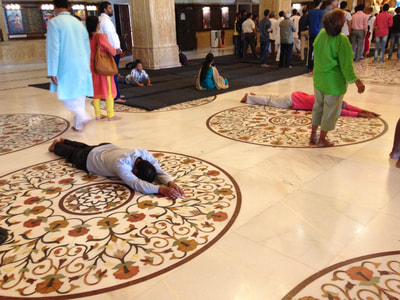
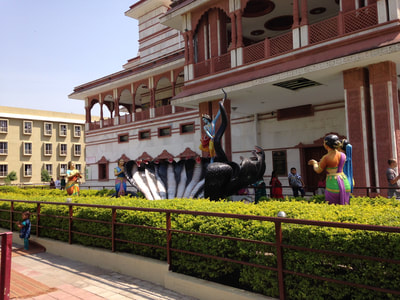
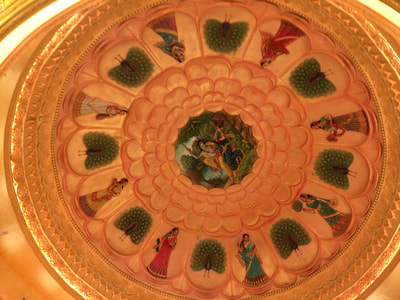


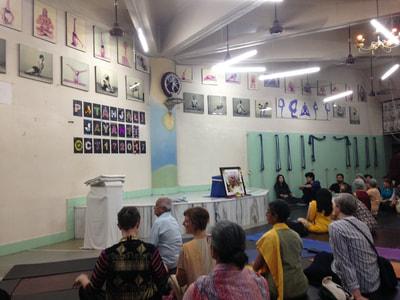

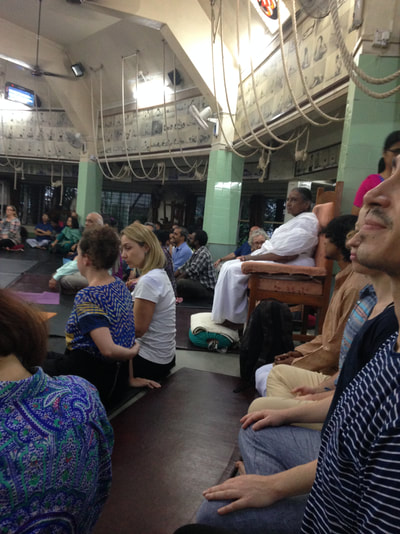
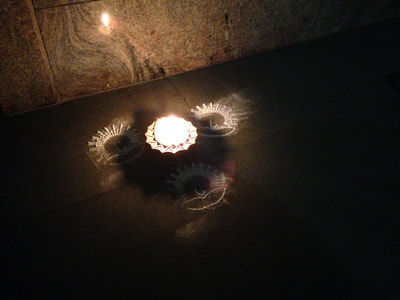

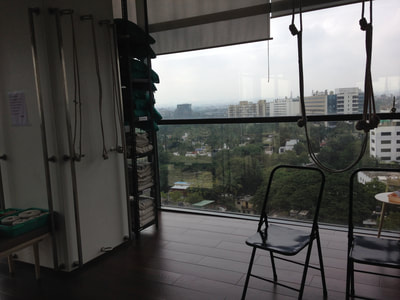
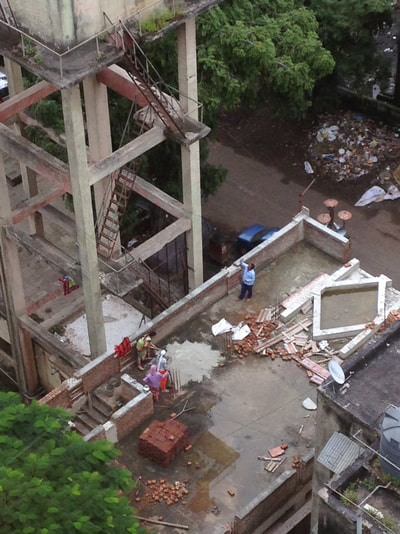
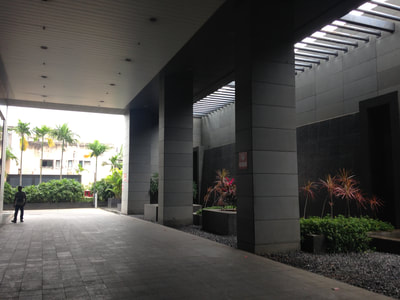


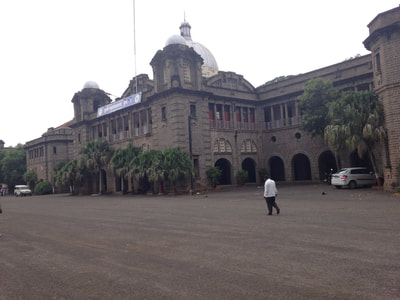
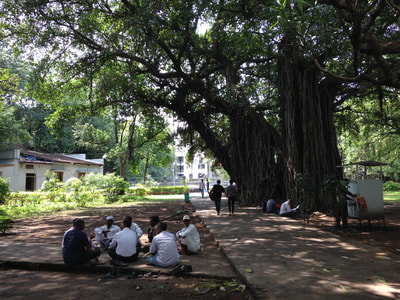
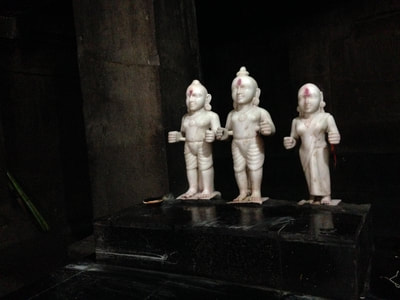

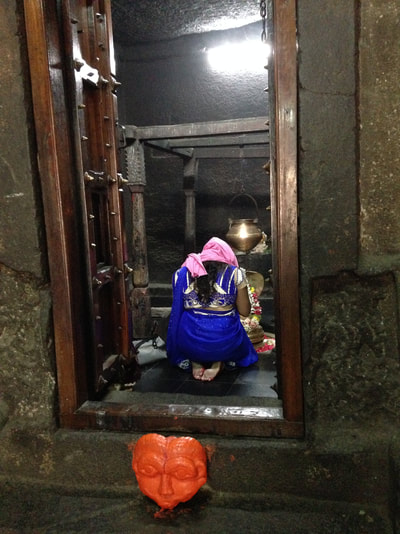
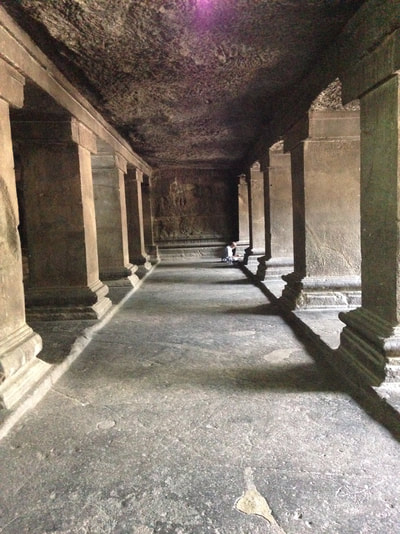
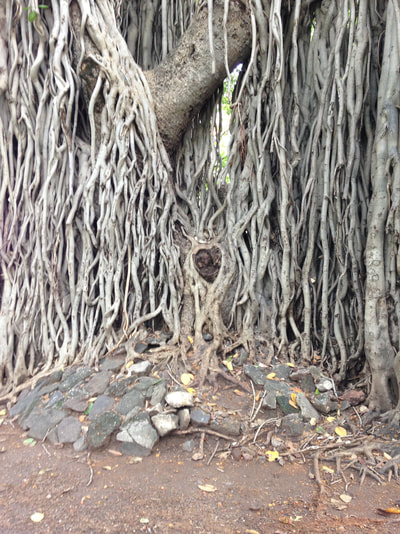

 RSS Feed
RSS Feed
